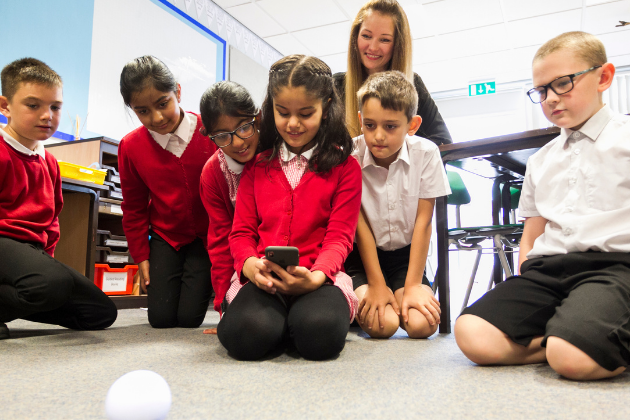Summer term computing projects for Year 6
11 May 2022

The summer term is finally here, and for Year 6, it is an exciting yet emotional time. Once SATs are over, there's time for celebrating the last few weeks of primary school and readying for the transition to secondary education.
In school, this often involves carrying out projects, end of term shows, sports events and ensuring children are ready to move to their secondary school. Here are a few ideas linked to computing to carry out with your Year 6 pupils before the end of term.
Link to D&T
STEM Learning's website has some great resources to use if you want to link to aspects of D&T. If so, a physical computing project using a Crumble controller or similar devices could be one to consider? Children can design and make something programmable, which can move, spin, flash, or do all of the above. It could be a space buggy, a carousel, a butterfly - whatever they decide. Your class may invent different creations and then tinker with the code and mechanisms to achieve their final products. It's a great way for children to apply aspects of science, maths and computing and become designers and inventors of their own ideas.
Make a step counter
Summer term brings sports days and lots of outdoor PE (fingers crossed for nice weather!) Tying into the healthy theme, children can design and make a step counter, which will sense steps using a micro:bit. Micro:bits are tiny computers which you can use for many projects. If you are keen to discover more about using them in the classroom, then there is a short course you can go on in your local area to find out how to use them in class and how to access the class kit loan scheme.
Plan a class party
Data collection, conducting surveys and analysis can be supported by software and results are shown in easy-to-view graphs and charts. It is not only a way to teach computing skills but also a great science context. Using software supports the creation of a branching database (see this resource on the j2e website) for plants or animals.
This activity provides an opportunity for children to plan and calculate the cost of an event using a spreadsheet. It could be adapted for an exciting end of year party or activity to celebrate pupils' time in primary school.
Collaborative working online
Children may have missed computing content over the past few years of disruption, so why not learn more about how computer systems and networks work using this STEM Learning resource? Most children use the internet to some degree, whether at home or school, but do they know how data transfers over it? Or how to work collaboratively on projects online? Finding out how the internet works facilitates online communication and connect pupils to the world around them, helping to develop their future skills.
Get creative
Multimedia activities such as creating podcasts, videos, webpages and editing this context all develop digital skills in children, which will be invaluable as they move into secondary education and beyond. Choose your topic and design, make, and evaluate your projects. This course supports the development of computing through contexts across the curriculum and is suitable for all primary teachers, not only Year 6.